- (5.0 Star)
CloudNet Certified Soft Pro.
Advance Diploma Training
We provide Online Instructor And Classroom Instructor led Live virtual classroom by certified trainers/ industry professionals
- Get Up to 35% discount
About Course
CloudNet Certified Soft Pro is a best Advance Diploma Course in Web Designing, Web Development and Software Application Development using today best technologies such HTML5, CSS3,Java Script, PHP & MySQL, ASP.Net, Java, J2EE and So on, design to equip trainee developerswith best technical skill and experience in the lab.
This course aimed to develop fresher student into highly employable, industry ready professional. This ambitious program is design by subject matter expert from different niche of IT industries to bridge the gap between supply of skilled man power and increasing demand for same.
CloudNet Certified Soft Pro covers today’s best programing technology including Photoshop, Illustrator, HTML5, CSS3, Java Script, JQuery, Boot Strap, PHP, MySQL, WordPress, Joomla, C#, ASP.Net, MS-SQL, ADO.Net, Core Java, J2EE, J2ME and Oracle 11g.
This program empowers and prepares you for your dream career, on successfully completion of this program trainee students will get opportunity as a Web Designer, Web Developer, ERP Developer, Apps Developer, Software Engineer and likes.
Key Features
You will get 100% job Assurance and life time e-placement support
classed taken by globally certified trainers
You will get 3 year Dedicated placement support
Courses are globally recognized & accredited

Course Type:
Advance Diploma Training
Live virtual classroom:
23,999/- Per Module
29,999/-
Regular classroom:
23,999/- Per Module
29,999/-
- Duration:
24 Months
- Enrolled:
88 Learners
- Eligibility:
10 / 10+2 / Graduate
- 5 Star:
15 Reviews
SEMESTER- I
Adobe Photoshop for Web
An image editing software developed and manufactured by Adobe Systems Inc. Photoshop is considered one of the leaders in photo editing software. The software allows users to manipulate, crop, resize, and correct color on digital photos. The software is particularly popular amongst professional photographers and graphic designers. Photoshop was originally conceived as a subset of the popular design software Adobe Illustrator, and Adobe expected to sell a modest several hundred copies per month. Expectations for Photoshop’s success were tempered by concerns over the capabilities of personal computers (PCs) in the early 1990s to run the program because it required more computer memory than most PCs came with or even, in some cases, than could be installed.
Duration : 30 Hrs. Eligibility : Fresher 10th/10+2/Graduate with
- HTML/CSS Skill
- Introduction to Photoshop
- Improving Images with Levels and Curves
- Image Retouching Techniques
- Manipulating Color
- Masking Images with Layer Masks
- Layer Masks: Creative Applications
- Layer Clipping Groups and Texture Channels
- Saving a Selection as a Mask Channel
- Selecting like a Pro: The Pen tool
- Color for the Web
- Optimizing Images
- Mocking up a Website Design
- Buttons and Navigation Graphics
- Getting Creative with Layer Styles
- Understanding Slicing
- Working with the GIF File Format
- Animating GIFs
- Creating and Saving Transparent Graphics
- Creative Backgrounds

Adobe Illustrator for Web
Adobe Illustrator is a vector graphics editor developed and marketed by Adobe Systems. The latest version, Illustrator CC, is the seventeenth generation in the product line. Unlike PhotoShop, which deals in pixels (raster images), this one deals in lines and algorithms for various shapes. It functions by generating curved paths connected by modifiable anchor points. These anchors, with their handles, are ultimately editable and never “leave” the structure of the file. Adobe Illustrator is a professional quality graphic art program. Its applications are diverse, from creating print to web graphics and, for our purposes, posters. Although the program is complex and requires a significant amount of time to truly master, it is quite easy to learn the basics and create work with a professional appearance. Introduction to Illustrator’s authoring environment
Duration : 40 Hrs. Eligibility : Fresher 10th/10+2/Graduate
- Working with Menus, Palettes and the Document Windown About the
- Control Palette,Using and saving Workspacesn Setting preferences, Moving
- around the Artboard, Using the Navigator paletten Options for viewing
- artworkn Using Illustrator Help
WORKING WITH BASIC TOOLS :
- Using the Toolbox, Selection techniques with the Selection and Direct
- Selection tools, Line and Shape tools, Modifing tool options, Techniques for
- polygons, rounded rectangles, spirals and stars n Defining the Stroke and Fill of shapes
TRANSFORMING AND CONTROLLING SHAPES :
- Grouping n Work in Group Isolation Mode, Understanding nested groupsn
- The Group Selection tool, Using the Free Transform tool, Changing the stacking order of objectsn Working with the Layers palette
OBJECTS :
- Aligning and distributing objects, Scaling objects, Rotating objects,
- Reflecting objects, Distorting objects Shearing objects, Position objects precisely
COLOUR :
- Color fundamentals, Color Modes (RGB / CMYK), Defining and using
- Global and Spot Colours, Mixing Colours with the Colour Palette and Colour
- Picker, Saving, loading and exporting Swatches, Creating, editing and
- applying Gradients, Sampling colours with the Eyedropper tool
LIVE TRACE :
- Importing bitmap graphics, Converting bitmap art into vector paths,
- Working with Live Trace presets and options
DRAWING WITH THE PENCIL TOOL:
- Create paths with the Pencil tooln Pencil, Eraser & Smooth tool optionsn
- Splitting paths with the Eraser tool, Simplifying paths with the Smooth tool
PRECISION DRAWING WITH THE PEN TOOL :
- Creating paths with thePen tool, Splitting and joining paths, Creating and
- editing Bezier curves, Using the Convert Anchor Point tool, Adding and
- removing Anchor Points,Adding arrowheads
PAINTING WITH THE PAINTBRUSH :
- Creating paths with the Brush tools (Scatter, Art, Calligraphic and Pattern),
- Brush tool options and libraries, Creating new brushes, Applying brush
- strokes to existing paths
SYMBOLS :
- Understanding how Symbols work, Creating and editing symbols, Adding symbols to a document, Modifying symbols sets with the Sumbols tool set
WORKING WITH TYPE :
- Creating Point, Path and Area type, Importing text, Applying character and paragraph formatting, Wrapping text around image, Threading text,
- Creating and applying Character and Paragraph Styles, Creating Outlines
CREATING COMPLEX ILLUSTRATIONS :
- Creating compound paths with the Pathfinder palette, Creating compound shapes using the path finder palette, Offset Paths, Outline Paths, Expanding objects, Working with Basic Tools
WORKING WITH MASKS :
- Creating clipping masks, Editing clipping masks and masked objects, Releasing Clipping Masks, Creating Opacity Masks, Editing opacity masks and masked objects, Understanding Knockout Group and Isolate Blending options,Transparency effects, Understanding blending modes, Preparing documents containing transparency for printing, Flattening n Documents
- Raster Effects Settings
CREATING GRADUATED SHAPES :
- Creating Blends, Editing Blends, Blend options
WORKING WITH GRADIENT MESH :
- Creating a Gradient Mesh Object, Using the Gradient tool, Techniques for
- subtle color transitions
CREATING WEB GRAPHICS :
- Creating Slices n Editing Slices n Working with the Save for Web dialog box,
- Graphic formats for the web (SVG, SWF, JPG, GIF, PNG 8, PNG 24)
- Creating an animated Flash banner
ADVANCED FILTERS AND EFFECTS :
- Working with Scribbles, Creating 3D Beveled and Extruded Shapes, 3D
- rotated shapes, Mapping artwork to 3D shapes
SPEEDING UP THE WORKFLOW WITH ACTIONS :
- Recording actions, Playing actions, Editing actions
DYNAMIC TEXT :
- Creating variables, Capturing data sets, Creating dynamically generated documents

HTML 5 is a revision of the Hypertext Markup Language (HTML), the standard programming language for describing the contents and appearance of Web pages.HTML5 was developed to solve compatibility problems that affect the current standard, HTML4. One of the biggest differences between HTML5 and previous versions of the standard is that older versions of HTML require proprietary plugins and APIs. (This is why a Web page that was built and tested in one browser may not load correctly in another browser.) HTML5 provides one common interface to make loading elements easier. For example, there is no need to install a Flash plugin in HTML5 because the element will run by itself.One of the design goals for HTML5 is to support for multimedia on mobile devices. New syntactic features were introduced to support this, such as video, audio and canvas tags.
Duration : 40 Hrs. Eligibility : Fresher 10th/10+2/Graduate
INTRODUCTION
LAYING OUT A PAGE WITH HTML5
- Page Structure
- New HTML5 Structural Tags
- Page Simplification
HTML5 – HOW WE GOT HERE
- The Problems HTML 4 Addresses
- The Problems XHTML Addresses
- The New More Flexible Approach of HTML5 – Paving the Cowpaths New Features of HTML5
- The HTML5 Spec(s)
- Current State of Browser Support
SECTIONS AND ARTICLES
- The section Tag
- The article Tag
- Outlining
- Accessibility
HTML5 AUDIO AND VIDEO
- Supported Media Types
- The audio Element
- The video Element
- Accessibility
- Scripting Media Elements
- Dealing with Non-Supporting Browsers
HTML5 FORMS
- Modernizr
- New Input Types
HTML5 NEW FORM ATTRIBUTES
- Autocomplete
- Novalidate
HTML5 NEW FORM FIELD ATTRIBUTES
- Required
- Placeholder
- Autofocus
- Autocomplete
- Form
- Pattern
NEW FORM ELEMENTS
- Datalist
- Progress and meter
HTML5 WEB STORAGE
- Overview of HTML5 Web Storage
- Web Storage
- Other Storage Methods
HTML5 CANVAS
- Getting Started with Canvas
- Drawing Lines
- Color and Transparency
- Rectangles
- Circles and Arcs
- Quadratic and Bezier Curves
- Images
- Text
INTEGRATED APIS
- Offline Application API
- Drag and Drop API
PROJECT
- Create Static Web Site

Cascading Style Sheets (CSS) is a style sheet language used for describing the look and formatting of a document written in a markup language.With CSS, designers and users can create style sheets that define how different elements, such as headers and links, appear. These style sheets can then be applied to any Web page. The term cascading derives from the fact that multiple style sheets can be applied to the same Web page. CSS was developed by the W3C.CSS gives more control over the appearance of a Web page to the page creator than to the browser designer or the viewer.
Duration : 30 Hrs. Eligibility : Fresher 10th/10+2/Graduate with HTML Skill
Introduction to CSS 3
- Basic CSS3 Selectors Advanced CSS3 Selectors
- Border Image
- Box Shadow
- Text-Shadow Property
- Text-Stroke Property Multiple Backgrounds
- Column Rules
- Background Origin
- Background Resize
- CSS Gradientsn Column Rules Opacity Transitions Transform
- Animations
- Using CSS3 in Practical Layout
- Project Create Website with CSS Animation
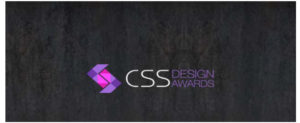
JavaScript is an interpreted programming or script language from Netscape. It is somewhat similar in capability to Microsoft’sVisual Basic, Sun’s Tcl, the UNIX-derived Perl, and IBM’s REXX. In general, script languages are easier and faster to code in than the more structured and compiled languages such as C and C++. Script languages generally take longer to process than compiled languages, but are very useful for shorter programs. JavaScript is used in Web site development to do such things as Automatically change a formatted date on a Web page, Cause a linked-to page to appear in a popup window, Cause text or a graphic image to change during a mouse rollover etc.
Duration : 20 Hrs. Eligibility : Fresher 10th/10+2/Graduate with HTML/CSS Skill
Introduction to Client Side Scripting Introduction to Java Script
- Javascript Types Variables in JS
- Operators in JS
- Conditions Statements
- Java Script Loops JS Popup Boxes
- JS Events
- JS Arrays
- Working with Arrays
- JS Objects JS Functions Using Java Scriptin Realtime
- Validation of Forms
- Related Examples
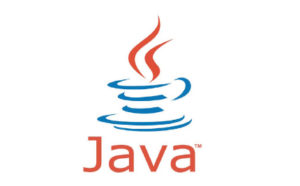
jQuery is a concise and fast JavaScript library that can be used to simplify event handling, HTML document traversing, Ajax interactions and animation for speedy website development. jQuery simplifies the HTML’s client-side scripting, thus simplifying Web 2.0 applications development.jQuery is a free, open-source and dual-licensed library under the GNU General Public License. It is considered one of the favorite JavaScript (JS) libraries available today. As of 2012, it is used by more than half of the Web’s top sites. To implement jQuery, a web developer simply needs to reference the jQuery JavaScript file within the HTML of a webpage. Some websites host their own local copy of jQuery, while others simply reference the library hosted by Google or the jQuery server.
Duration : 20 Hrs. Eligibility : Fresher 10th/10+2/Graduate with HTML/CSS Skill
Introduction to jQuery
- jQuery Features
- Installing jQuery
- jQuery Syntax
- jQuery Ready Function
- jQuery Selectors
- jQuery Actions
- jQuery Custom Functionality
- jQuery Libraries
- jQuery Validation
- jQuery Slideshow
- jQuery Dropdownn jQuery UI
- Working with jQueryUIn jQuery Accordions
- jQuery Tabs
- jQuery Tooltips
- jQuery Autocomplete

Every web developer should know how to properly code a responsive website. Bootstrap 3 is an ultimate framework that learns you how to think when coding responsive websites and makes their creation much easier and faster. When I was learning Bootstrap 3, I was looking for a simple list of basic Bootstrap 3 classes with description and there were none – only a few lists for Bootstrap 2, without any description, therefore pretty useless for my intentions. So I created this list of Bootstrap 3 CSS classes with so much desired description – I hope it’s comprehensive. Keep in mind that it’s not a documentation, it’s just a quick hint to help you understand the meaning of each mentioned class.
Duration : 30 Hrs. Eligibility : Fresher 10th/10+2/Graduate with HTML/CSS Skill
- Bootstrap Scaffolding
- Bootstrap CSS
- Bootstrap Layout Components
- Bootstrap JavaScript Plugins
- Using Bootstrap
SEMESTER- II
PHP is a script language and interpreter that is freely available and used primarily on Linux Web servers. PHP, originally derived from Personal Home Page Tools, now stands for PHP: Hypertext Preprocessor, which the PHP FAQ describes as a “recursive acronym.”PHP is an alternative to Microsoft’s Active Server Page (ASP) technology. As with ASP, the PHP script is embedded within a Web page along with its HTML. Before the page is sent to a user that has requested it, the Web server calls PHP to interpret and perform the operations called for in the PHP script.
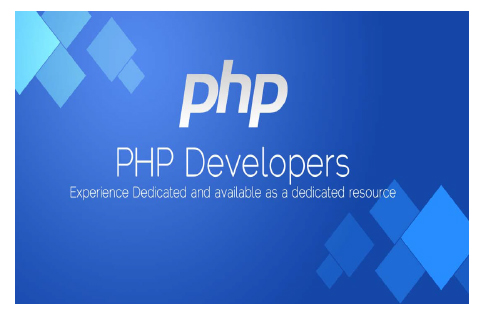
Duration : 60 Hrs. Eligibility : Fresher 10th/10+2/Graduate with HTML/CSS Skill
OVERVIEW OF PHP
- Static vs. Dynamic Web Sites
- Dynamic Content from Databases
- Developing Dynamic Internet Applications
- Client-Side Scripting vs. Server-Side Scripting
- Overview of PHP Advantages and Capabilities
- Configuring php.ini
- PHP vs. ASP
CONDITIONAL CONSTRUCTS
True and False Expressions
- if, else and elseif
- switch/case Statement
- The ? (Ternary) Operator
- Timestamps
PHP FUNCTIONS
- Introduction to Functions
- Declaring Functions
- Scope
- PHP
- Passing Arguments to Functions
- Local and Global Scope
- Passing Arguments to Functions by Value and Reference
- Returning Values from a Function
- Using Include Files
- The Require Statement
- Recursion
- Dynamic Function Calls
- Predefined PHP Functions
ARRAYS IN PHP
- What are Arrays?
- Usage of Arrays in PHP
- Array Indexing
- Initializing Arrays
- Operating on Arrays
- Sorting Arrays
- One-Dimensional Arrays
- Multi-Dimensional Arrays
- Associative Arrays
- Array Functions
- Forms and Arrays in Web Applications
WORKING WITH DATA FILES IN PHP
- Searching File Contents With Regular Expressions
- Changing and Editing File Contents
- Splitting and Joining Information Inside Files
- String Functions
- Regular Expression Functions
- Reading, Writing and Deleting Files
- Handling File Permissions
- File Locking
- Reading Directory Contents
- Creating and Deleting Directories
CONFIGURING AND USING MYSQL
- MySQL as a Client/Server Solution
- Introduction to MySQL Capabilities as a Powerful RDBMS
- Installing and Configuring MySQL
- Connecting to MySQL
- PHP Functions Specific to MySQL
- Executing SQL Calls: SELECT, INSERT, FETCH, UPDATE, DELETE
- Using PHP MyAdmin to configure MySQL
MISCELLANEOUS PHP TASKS
- Error Logging
- Session Management and Maintaining State
- Web Application Architecture
- Using Environment Variables
- Changing Execution by Redirecting to Other URLs
- Embedding JavaScript within PHP
- Using the HTTP Protocols to Pass Data
- Showing Different Content to Different Browsers
- Getting IP Addresses from Visitors
BASIC SCRIPTING AND LOOPING CONSTRUCTS
- PHP Scripting Fundamentals
- Print Statement
- Code Blocks
- Primitive Data Types
- Defining Constants and Variables
- Looping Constructs: while, do… while, for, exit & break
PHP OPERATORS
- Logical Operators
- Relational Operators
- Bitwise Operators
- Other Operators
WORKING WITH DATABASES AND FORMS
- Configuring PHP For Database Support
- PHP’s Database APIs
- PHP’s SQL API
- MySQL vs. Access
- MySQL vs. SQL Server
- Database Drivers
- Database Driver Class Wrappers
- web solutions
ODBC
- Simple SQL Queries via PHP
- Tracking Visitors with Session IDs
- Populating Forms
- Retrieving Data from Forms
ENABLING E-COMMERCE
- Required Characteristics of an E-Commerce Site
- Authentication and Authorization
- Data Validation
- Building a Custom Shopping Cart
- Persisting Shopping Cart Data Over Multiple Pages
- Criteria for Evaluating Third Party Shopping Cart Solutions
- Open Source vs. Commercial Shopping Cart Solutions
- Order Processing via the Web
- Implementing Order System Security using SSL
- Using Mail Servers (SMTP and Sendmail) for Client Communication
- Configuring E-mail Output Parameters
USING COOKIES WITH PHP
- Purpose of Cookies
- Cookie Myths
- Setting Cookies
- Retrieving Cookies
- Expiring Cookies
- Deleting Cookies
- Storing Arrays in Cookies
USING SESSION WITH PHP
- What Session Control is?
- Understanding Basic Session Functionality
- Starting a Session
- Registering Session variables
- Using Session Variables
- Destroying the variables and Session
MySQL is an open source relational database management system (RDBMS) based on Structured Query Language (SQL). MySQL runs on virtually all platforms, including Linux, UNIX, and Windows. Although it can be used in a wide range of applications, MySQL is most often associated with web-based applications and online publishing and is an important component of an open source enterprise stack called LAMP. LAMP is a Web development platform that uses Linux as the operating system, Apache as the Web server, MySQL as the relational database management system and PHP as the object-oriented scripting language. (Sometimes Perl or Python is used instead of PHP.)
Duration : 20 Hrs. Eligibility : Fresher 10th/10+2/Graduate with HTML/CSS Skill
DATABASE
- Connecting to and disconnecting from the Server
- How to creating and delete a database?
- How can we choose and change database?
DATA TYPE, OPERATORS AND TABLE CREATION
- Data type
- MySQL Operators
- Creating table
MANIPULATING TABLE
- How to insert data?
How to delete data? - How to delete a table?
- How to rename a table?
- How add or delete or modify column in a table?
RETRIEVING & RESTRICTING DATA
- How can we fetch data from table?
- Operators
- Functions
- How can we impose condition when we are fetching data?
MYSQL FUNCTIONS
- Single row function
- Multiple row function
GROUPING
- How to use group by clause and why?
- How can we restrict data when we are using group by clause?
- Joining
- What is joining?
- What are the various types of joining? With some example.
SUBQUERY
- What is subquery?
- Why should we use subquery?
- How to use subquery?
CONSTRAINTS
- What is constraints and when we can apply constraints on table?
- What is NULL?
- What is primary key?
- What is unique key?
- What foreign key?
- How can we use these constraints?
INDEXING & ENGINE
- What is index?
- Merits and demerits of indexing on a table?
- How to create an index?
- What is engine?
- How can we change a table engine?
- Few points to, that may help us to choose the right type of engine for a table.
STORED PROCEDURE, TRIGGER AND PREPARED STATEMENT
- What prepared statement and how to use prepared statement?
- What stored procedure and how to use stored procedure?
- What trigger and how to use trigger?
QUERY OPTIMIZATION
- Why we need to optimize our query?
- How can we optimize our query?
- How can we optimize our database structure?
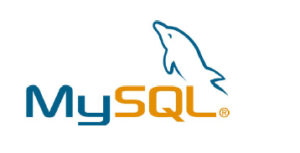
WordPress is a free and open-source content management system (CMS) based on PHP and MySQL.Features include a plugin architecture and a template system.WordPress users may install and switch between themes. Themes allow users to change the look and functionality of a WordPress website and they can be installed without altering the content or health of the site. Every WordPress website requires at least one theme to be present and every theme should be designed using WordPress standards with structured PHP, valid HTML and CSS.WordPress’s plugin architecture allows users to extend the features and functionality of a website or blog. WordPress has over 39,078 plugins available,each of which offers custom functions and features enabling users to tailor their sites to their specific needs.
Duration : 20 Hrs. Eligibility : Fresher 10th/10+2/Graduate with HTML/CSS Skill
- Foundations of a WordPress-based website
- Basics of the WordPress User Interface
- Finding and Using WordPress Plugins
- Working with WordPress Themes
- WordPress Content Management
- Creating and Managing Content
- WordPress based Sites
- WordPress Search Engine Optimization (SEO)
- Managing Multimedia with WordPress
- WordPress Site Maintenance
- WordPress Security
- Troubleshooting Common WordPress Problems
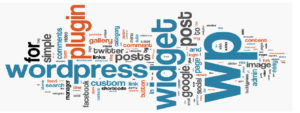
- Joomla! is an award-winning content management system (CMS), which enables you to build Web sites and powerful online applications. Many aspects, including its ease-of-use and extensibility, have made Joomla! the most popular Web site software available. Best of all, Joomla is an open source solution that is freely available to everyone.Many companies and organizations have requirements that go beyond what is available in the basic Joomla package. In those cases, Joomla’s powerful application framework makes it easy for developers to create sophisticated add-ons that extend the power of Joomla into virtually unlimited directions.Since Joomla is based on PHP and MySQL, you’re building powerful applications on an open platform anyone can use, share, and support. To find out more information on leveraging the Joomla framework.
- Duration : 20 Hrs. Eligibility : Fresher 10th/10+2/Graduate with HTML/CSS Skill
- Introduction to CMS
- Joomla 2.5 Installation
- Joomla Terminology and Concepts
- Joomla Admin Settings
- Content Management in Joomla
- Menu Management in Joomla
- Joomla Modules
- Components and Plugins
- Joomla Template
- Custom Template Design
- Live Template Conversion Example
- Using Premium Templates
- Extensions in Joomla
- Live project Integration

Programming in C#
C# (pronounced “C-sharp”) is an object-oriented programming language from Microsoft that aims to combine the computing power of C++ with the programming ease of Visual Basic. C# is based on C++ and contains features similar to those of Java.C# is designed to work with Microsoft’s .Net platform. Microsoft’s aim is to facilitate the exchange of information and services over the Web, and to enable developers to build highly portable applications. C# simplifies programming through its use of Extensible Markup Language (XML) and Simple Object Access Protocol (SOAP) which allow access to a programming object or method without requiring the programmer to write additional code for each step. Because programmers can build on existing code, rather than repeatedly duplicating it, C# is expected to make it faster and less expensive to get new products and services to market..
Duration : 60 Hrs. Eligibility : Fresher 10th/10+2/Graduate with C/ C++ Skill
- .NET: WHAT YOU NEED TO KNOW
- .NET Executables and the CLR
- A .NET Testbed for C# Programming
- Using Visual Studio
FIRST C# PROGRAMS
- Hello, World
- Namespaces
- Variables and Expressions
- Using C# as a Calculator
- Input/Output in C#
- .NET Framework Class Library
DATA TYPES IN C#
- Data Types
- Integer Types
- Floating Point Types
- Decimal Type
- Characters and Strings
- Boolean Type
- Conversions
- Nullable Types
OPERATORS AND EXPRESSIONS
- Operator Cardinality
- Arithmetic Operators
- Relational Operators
- Logical Operators
- Bitwise Operators
- Assignment Operators
- Expressions
- Checked and Unchecked
CONTROL STRUCTURES
- If Tests
- Loops
- Arrays
- Foreach
- More about Control Flow
- Switch
OBJECT-ORIENTED PROGRAMMING
- Objects
- Classes
- Inheritance
- Polymorphism
- Object-Oriented Languages
- Components
- CLASSES
- Classes as Structured Data
- Methods
- Constructors and Initialization
- Static Fields and Methods
- Constant and Readonly
MORE ABOUT TYPES
- Overview of Types in C#
- Value Types
- Boxing and Unboxing
- Reference Types
METHODS, PROPERTIES AND OPERATORS
- Methods
- Parameter Passing
- Method Overloading
- Variable-Length Parameter Lists
- Properties
- Operator Overloading
CHARACTERS AND STRINGS
- Characters
- Strings
- String Input
- String Methods
- String Builder Class
- Programming with Strings
ARRAYS AND INDEXERS
- Arrays
- System.Array
- Random Number Generation
- Jagged Arrays
- Rectangular Arrays
- Arrays as Collections
- Indexers
INHERITANCE
- Single Inheritance
- Access Control
- Method Hiding
- Initialization
VIRTUAL METHODS AND POLYMORPHISM
- Virtual Methods and Dynamic Binding
- Method Overriding
- Fragile Base Class Problem
- Polymorphism
- Abstract Classes
- Sealed Classes
- Heterogeneous Collections
FORMATTING AND CONVERSION
- ToString
- Format Strings
- String Formatting Methods
- Type Conversions

EXCEPTIONS
- Exception Fundamentals
- Structured Exception Handling
- User-Defined Exception Classes
- Inner Exceptions
INTERFACES
- Interface Fundamentals
- Programming with Interfaces
- Using Interfaces at Runtime
- Resolving Ambiguities
.NET INTERFACES AND COLLECTIONS
- Collections
- IEnumerable and IEnumerator
- Copy Semantics and ICloneable
- Comparing Objects
- Generic Types
- Type-Safe Collections
DELEGATES AND EVENTS
- Delegates
- Anonymous Methods
- Events
INTRODUCTION TO WINDOWS FORMS
- Creating Windows Applications Using Visual Studio
- Partial Classes
- Buttons, Labels and Textboxes
- Handling Events
- Listbox Controls
ADDITIONAL C# FEATURES
- Auto-Implemented Properties
- Implicitly Typed Variables
- Object Initializers
- Collection Initializers
- Anonymous Types
- Partial Methods
- Extension Methods
- Lambda Expressions
- Language-Integrated Query (LINQ)
ASP.NET is a unified Web development model that includes the services necessary for you to build enterprise-class Web applications with a minimum of coding. ASP.NET is part of the .NET Framework, and when coding ASP.NET applications you have access to classes in the .NET Framework. You can code your applications in any language compatible with the common language runtime (CLR), including Microsoft Visual Basic and C#. These languages enable you to develop ASP.NET applications that benefit from the common language runtime, type safety, inheritance, and so on. If you want to try ASP.NET, you can install Visual Web Developer Express using the Microsoft Web Platform Installer, which is a free tool that makes it simple to download, install, and service components of the Microsoft Web Platform. These components include Visual Web Developer Express, Internet Information Services (IIS), SQL Server Express, and the .NET Framework. All of these are tools that you use to create ASP.NET Web applications. You can also use the Microsoft Web Platform Installer to install open-source ASP.NET and PHP Web applications.
Duration : 60 Hrs. Eligibility : Fresher 10th/10+2/Graduate with HTML/CSS Programming Skill
INTRODUCTION TO ASP.NET
- From ASP to ASP.NET
- Web Forms
- Web Services
- ASP.NET Features
WEB FORMS ARCHITECTURE
- Page Class
- Web Forms Life Cycle
- Web Forms Event Model
- Code-Behind
- ASP.NET AND HTTP
- Request/Response Programming
- HttpRequest Class
- HTTP Collections
- HttpResponse Class
- Redirection
- HttpUtility Class
WEB APPLICATIONS USING VISUAL STUDIO
- Using Visual Web Developer
- Visual Studio Forms Designer
- Using Components
- Shadow Copying
- Using the Global.asax File
- Data Binding
STATE MANAGEMENT AND WEB APPLICATIONS
- Session State
- Application State
- Multithreading Issues
- Cookies
SERVER CONTROLS
- HTML Server Controls
- Web Forms Server Controls
- Rich Controls
- Validation Controls
- User Controls
CACHING IN ASP.NET
- What Is Caching
- Page-Level Caching
- Optimizing Your ASP.NET Application
- Application Caching
ASP.NET CONFIGURATION AND SECURITY FUNDAMENTALS
- Configuration Overview
- Authentication and Authorization
- Forms Authentication
- Windows Authentication
- Security and ASP.NET
DEBUGGING, DIAGNOSTICS AND ERROR HANDLING
- Debugging
- Application Tracing
- Page Tracing
- Error Handling
- MORE SERVER CONTROLS
- Most recent ASP.NET Controls
- Menus
- Master Pages
- ADO.NET AND LINQ
- ADO.NET Overview
- NET Data Providers
- Connections
- Commands
- DataReaders and Connected Access
- Data Sets and Disconnected Access
- Language Integrated Query
DATA ACCESS IN ASP.NET
- Most recent ASP.NET Controls
- Data Source Controls
- Connection String Storage
- GridView
- DetailsView
- FormView
- Object Data Sources
- ListView
- DataPager
- LinqDataSource
PERSONALIZATION AND SECURITY
- Configuration Overview
- Themes
- Skins
- Security in ASP.NET
- Membership and Roles
- Login Controls
- User Profiles
INTRODUCTION TO ASP.NET AJAX
- Rich Client Applications
- AJAX
- ScriptManager
- UpdatePanel
- AJAX Client Library
- Remote Method Calls
- AJAX Control Toolkit
HTTP PIPELINE
- Pipeline Architecture
- Contex
- Applications
- Handlers
- Modules

Microsoft SQL Server is the high-performance relational database engine from Microsoft for its Windows Servers and development tools. Microsoft SQL Server is widely used in many businesses, from small to large, for a wide variety of applications. It is an excellent backend database for web server applications and software, and is highly recommended for active web sites.SQL Server is a relational database management system (RDBMS) from Microsoft that’s designed for the enterprise environment. SQL Server runs on T-SQL (Transact -SQL), a set of programming extensions from Sybase and Microsoft that add several features to standard SQL, including transaction control, exception and error handling, row processing, and declared variables.
Duration : 20 Hrs. Eligibility : Fresher 10th/10+2/Graduate with Basic Programming Skill
SQL SERVER BASICS
- Client-Server database architecture and SQL Server architecture
- Installing MS SQL Server (2008, 2012 or earlier) • Tables, relational
- databases, SQL and database objects
- Design and develop MS SQL Server databases and tables
- Referencing objects in SQL Server databases
- Obtaining information from database tables
- SQL Server security
UNDERSTANDING TABLES AND DATABASES
- Creating databases manually
- Creating databases with database wizard
- Database
- Defining a maintenance plan wizard
- Databases using Transact-SQL
- Database manipulation: characteristics and deletions
- Working with tables
INDEXES AND VIEWS
- The basics of index structures
- Creating and working with indexes
- Indexes and table architecture
- Creating views (including using view manager)
- Working with views
- Indexed views
DATABASE DIAGRAMS, THE QUERY ANALYZER AND SQL BASICS
- Working with diagrams
- Diagramming for pubs database
- Server connectivity and Screen management
- Working with queries
- SQL essentials (select, create table, insert, delete, update)
STORED PROCEDURES, TRIGGERS AND REPLICATION
- Components of stored procedures
- Creating and working with stored procedures/system stored procedures
- Components of triggers
- Creating and working with triggers
- Replication model and types of replication
- Merge replication
DATA TRANSFORMATION SERVICES (DTS), BACK UPS/RESTORES, USERS, ROLES, LOGINS AND
- Analysis Manager
- Creating, importing and exporting DTS
- Creating, scheduling backups and restores
- Authentication types, users, roles, security plans
- Configuring DSN, loading analysis manager and working with cubes Work on a final project
ADO.NET provides consistent access to data sources such as SQL Server and XML, and to data sources exposed through OLE DB and ODBC. Data-sharing consumer applications can use ADO.NET to connect to these data sources and retrieve, handle, and update the data that they contain. ADO.NET separates data access from data manipulation into discrete components that can be used separately or in tandem. ADO.NET includes .NET Framework data providers for connecting to a database, executing commands, and retrieving results. Those results are either processed directly, placed in an ADO.NET DataSet object in order to be exposed to the user in an ad hoc manner, combined with data from multiple sources, or passed between tiers. The DataSet object can also be used independently of a .NET Framework data provider to manage data local to the application or sourced from XML.
Duration : 30 Hrs. Eligibility : Fresher 10th/10+2/Graduate with C/C++ Skill
INTRODUCTION TO ADO.NET
- Microsoft Data Access Technologies
- From ADO to ADO.NET
- ADO.NET Architecture
- Namespaces and Classes
- Interfaces
- DataSets and Disconnected Access
- First ADO.NET Programs
- Acme Computer Case Study
ADO.NET CONNECTIONS
- .NET Data Providers
- IDbConnection
- Connection Classes
- Connection Strings
- Connection Pooling
- Connection Events
- Error Handling
ADO.NET CONNECTIONS
- Database Programs with ASP.NET
ADO.NET COMMANDS
- IDbCommand
- Command Objects
- Creating Commands
- Executing Commands
- Parameterized Queries
- Command Types
- Using Stored Procedures
- Batch Queries
DATA READERS AND CONNECTED ACCESS
- DataReaders
- IDataReader
- IDataRecord
- Type-Safe Accessors
NULL COLUMNS
- ExecuteReader Options
- Multiple Result Sets
- Obtaining Schema Information
DATA SETS AND DISCONNECTED ACCESS
- DataSet
- DataAdapter
- Command Objects
- DataTable
- DataColumn
- DataRow
- Row States and Versionst
- Accept or Reject Changes
- DataTable Events
- Updating a Database from a DataSet
- Command Builders
MORE ABOUT DATASETS
- Filtering DataTables
- Multiple Table DataSets
- Schema
- Constraints
- Relations
- Navigating a DataSet
- DataMapping
- Creating a DataSet Programmatically
- Ado Net
XML AND ADO.NET
- Strong Coupling Between ADO.NET and XML
- Rendering XML from a DataSet
- Controlling XML Output
- Reading XML into a DataSet
- XML Schema and DataSets
- Typed DataSets
- Table Adapters
- Synchronizing DataSets and XML
- XML Serialization
DATA BINDING
- Data Binding in Windows Forms
- Simple Data Binding
- Complex Data Binding
- DataGrid Binding
- DataView
- Filtering and Sorting
- Data Binding with .NET
CONCURRENCY AND TRANSACTIONS
- DataSets and Concurrency
- Optimistic Concurrency
- Pessimistic Concurrency
- Handling Concurrency Violations
- ADO.NET Transactions
- Database Transactions
NEW FEATURES IN ADO.NET
- Using Server Explorer in Visual Studio
- Asynchronous Database Operations
- Multiple Active Result Sets
- Bulk Copy in ADO.NET
LINQ TO ADO.NET
- Language Integrated Query (LINQ)
- Bridging Objects and Data
- Using Object Relational Designer
- Filtering, Ordering and Aggregation
- Inserts, Deletes and Updates
- LINQ to SQL
- LINQ to Dataset
SEMESTER- III
Java is a general purpose, high-level programming language developed by Sun Microsystems. The small team of engineers, known as Green Team, initiated the language in 1991. Java was originally called OAK, and was designed for handheld devices and set-top boxes. Oak was unsuccessful, so in 1995 Sun changed the name to Java and modified the language to take advantage of the burgeoning World Wide Web. Java is an object-oriented language similar to C++, but simplified to eliminate language features that cause common programming errors. Java source code files (files with a .java extension) are compiled into a format called bytecode (files with a .class extension), which can then be executed by a Java interpreter. Java is object-oriented, which means that, among other characteristics, an object can take advantage of being part of a class of objects and inherit code that is common to the class. Objects are thought of as “nouns” that a user might relate to rather than the traditional procedural “verbs.” A method can be thought of as one of the object’s capabilities or behaviors.
Duration : 60 Hrs. Eligibility : Fresher 10th/10+2/Graduate with C/C++ Programming Skill
INTRODUCTION OF JAVA
- What is Java?
- How to Get Java
- A First Java Program
- Compiling and Interpreting Applications
- The JDK Directory Structure
DATA TYPES AND VARIABLES
- Primitive Datatypes ,Declarations
- Variable Names
- Numeric Literals,Character Literals
- String, String Literals
- Arrays, on-Primitive Datatypes, the Dot Operator
- Java
OPERATORS AND EXPRESSIONS
- Expressions
- Assignment Operator
- Arithmetic Operators
- Relational Operators
- Logical Operators
- Increment and Decrement Operators
- Operate-Assign Operators (+=, etc.)
- The Conditional Operator
- Operator Precedence
- Implicit Type Conversions
- The Cast Operator
CONTROL FLOW STATEMENTS
- Statements
- Conditional (if) Statements
- Data types and Variables 3
- Adding an else if
- Conditional (switch) Statements
- While and do-while Loops
- for Loops
- The continue Statement
- The break Statement
METHODS
- Methods
- Calling Methods
- Defining Methods
- Method Parameters
- Scope
- Method Parameters
- So, Why All the static?
OBJECT-ORIENTED PROGRAMMING
- Introduction to Object-Oriented Programming
- Classes and Objects
- Fields and Methods
- Encapsulation
- Access Control
- Inheritance
- Polymorphism
OBJECTS AND CLASSES
- Defining a Class
- Creating an Object
- Instance Data and Class Data
- Methods
- Constructors
- Access Modifiers
- Encapsulation
USING JAVA OBJECTS
- Printing to the Console
- Printf Format Strings
- String Builder and String Buffer
- Methods and Messages
- toString
- Parameter Passing
- Comparing and Identifying Objects, Destroying Objects
INHERITANCE IN JAVA
- Inheritance
- Inheritance in Java
- Casting
- Method Overriding
- Polymorphism
- super
- The Object Class
- PACKAGES
- The import Statement
- Static Imports
- Casting
- CLASSPATH and Import
- Defining Packages
- Package Scope
EXCEPTION HANDLING
- Exceptions Overview
- Catching Exceptions
- The finally Block
- Exception Methods
- Declaring Exceptions
- Defining and Throwing Exceptions
- Errors and Runtime Exceptions
- Assertions
INPUT/OUTPUT STREAMS
- Overview of Streams
- Bytes vs. Characters
- Converting Byte Streams to Character Streams
- File Object
- Binary Input and Output
- PrintWriter Class
- Basic and Filtered
COLLECTION FRAMEWORK
- The Collections Framework
- The Set Interface
- Set Implementation Classes
- The List Interface
- List Implementation Classes
- The Map Interface
- Map Implementation Classes
INNER CLASSES
- Inner Classes
- Member Classes
- Local Classes
- Anonymous Classes
- Instance Initializers
- Static Nested Classes
INTRODUCTION TO THREADS
- Non-Threaded Applications
- Threaded Applications
- Creating Threads
- Thread States
- Runnable Threads
- Coordinating Threads
- Interrupting Threads
- Runnable Interface, ThreadGroups
INTERFACES AND ABSTRACT CLASSES
- Separating Interface and Implementation
- UML Interfaces and Realization
- Defining Interfaces
- Implementing and Extending Interfaces
- Runnable Threads
- Abstract Classes
SERIALIZATION
- Object Serialization
- Serializable Interface
- Serialization API
- ObjectInputStream and ObjectOutputStream
- The Serialization Engine
- Transient Fields
- readObject and writeObject
- Externalizable Interface
GENERICS
- Using Generics
- Type Erasure
- Type Boundaries
- Wildcards, Generic Methods
- Strengths and Weaknesses of Generics
- Legacy Code and Generics
ANNOTATIONS
- Uses for Meta-Data
- The Annotations Model
- Annotation Types and Annotations
- Built-In Annotations
- Annotations vs. Descriptors (XML)
REFLECTION
- Uses for Meta-Data
- The Reflection API, The Class Class
- The java.lang.reflect Package
- Reading Type Information
- Navigating Inheritance Trees
- Dynamic Instantiation, Dynamic Invocation
- Reflecting on Generics
ERROR HANDLING
- Error handling strategies
- return values vs exceptions
- Basic Exception Handling
- try/catch/finally/throw
- Debugging
REMOTE METHOD INVOCATION (RMI)
- Introduction
- RMI Architecture
- The Remote Interface
- The Remote Object
- Writing the Server
- The RMI Compiler
- Writing the Client
- Remote Method Arguments and Return Values
- Dynamic Loading of Stub Classes
- Remote RMI Client Example
- Running the Remote RMI Client Example
- JDBC
- Database basics
- SQL, MySQL, PostgreSQL-Introduction and overview
- What Is the JDBC API?
- Driver Types
- Two-tier and Three-tier Models
- Connection Overview
- Transactions
- DriverManager Overview
- Statement Overview
- Sending Batch Updates
- ResultSet Overview
- Types of Result Sets
- Concurrency Types
- PreparedStatement Overview
- CallableStatement Overview
- ResultSetMetaData, Scrollable ResultSet,
- Prepared Statement, Callable Statement
- Performing Batch Update.

J2EE (Java 2 Platform, Enterprise Edition) is a Java platform designed for the mainframe-scale computing typical of large enterprises. Sun Microsystems (together with industry partners such as IBM) designed J2EE to simplify application development in a thin client tiered environment. J2EE simplifies application development and decreases the need for programming and programmer training by creating standardized, reusable modular components and by enabling the tier to handle many aspects of programming automatically. It full support is included for Enterprise JavaBeans. EJB is a server-based technology for the delivery of program components in an enterprise environment. It supports the Extensible Markup Language (XML) and has enhanced deployment and security features. Java Server Pages (JSP) is the Java equivalent to Microsoft’s Active Server Pages (ASP) and is used for dynamic Web-enabled data access and manipulation.
Duration : 60 Hrs. Eligibility : Fresher 10th/10+2/Graduate with Java Programming Skill
I NTRODUCTION TO ENTERPRISE EDITION
- Distributed Multitier Applications
- J2EE Containers
- Web Services Support
- Packaging Applications
- J2EE 1.4 APIs
WEB SERVER AND APPLICATION SERVER
- Tomcat-Introduction
- Overview, installation, Configuring Tomcat
- Jboss server-Introduction
- Overview,installation and Configuration
- Comparison
ANT TOOL
- Basics and introductions,
- Building web applications
- Using Ant Tool
JAVA SERVLET TECHNOLOGY
- What is Web Application?
- What Is a Servlet?
- Servlet Life Cycle
- Sharing Information
- Using Scope Objects
- Controlling Concurrent Access
- Getting Information from Requests
- Constructing Responses
- Filtering Requests and Responses
- Programming Filters
- Customized Requests and Responses
- Specifying Filter Mappings
- Invoking Other Web Resources
- Including Other Resources in
- The Response
- Transferring Control
- Accessing the Web Context
- Maintaining Client State
- Session Management
- Session Tracking
- Tracking Service Requests
- Notifying Methods to Shut Down
- Creating Polite Long-Running Methods
JSP TECHNOLOGY
- JavaServer Pages Technology
- The Life Cycle of a JSP Page
- Translation and Compilation
- Creating Static Content
- Response and Page Encoding
- Creating Dynamic Content
- Using Objects within JSP Pages
- Expression Language
- Deactivating Expression Evaluation
- Implicit Objects
- Literals & Operators
- Reserved Words
- JavaBeans Components
- Reusing Content in JSP Pages
- Transferring Control
- Jsp: param Element
- Including an Applet
- Setting Properties for
- Groups of JSP Pages
- JSP scripting elements and directives-,
- Declarations, expressions, directives
- Java
- Scriplets, comments,actions,implicite
- JSP objects – Working with variable
- Scopes – page scope, request scope,
- Session scope, application scope- Using
- Java beens,custom tags, Declare Default
- Content Type, Set Default Buffer Size,
- JSTL,Expression Language
CUSTOM TAGS IN JSP PAGES
- What Is a Custom Tag?
- Types of Tags
- Tags with Attributes
- Tags with Bodies
- Tags That Define Variables
- Communication between Tags
- Tag Library Descriptors
- Declaring Tag Files
- Declaring Tag Handlers
- Declaring Tag Attributes for
- Tag Handlers
- Declaring Tag Variables for Tag Handlers
- Programming Simple Tag Handlers
- Including Tag Handlers in
- Web Applications
- Cooperating Tags
JAVA DATABASE CONNECTIVITY (JDBC)
- Introduction
- Relational Databases
- Structured Query Language
- A Sample Program
- Transactions
- Meta Data
- AJAX
- Introduction to AJAX
- AJAX Components
- HTML & CSS, JavaScript & DOM
- XMLHttpRequest
- Server Side Code
- AJAX – JSP Application
- Ajax with Servlet and JSP
- XML and JSON for Ajax
- Database Application with Ajax
- Ajax libraries and Toolkits
- XML
- Markup Languages
- Why XML?
- DTD
- XML & XSL
- XML Schemas
- XML Parsers
- Reply, Forward & Delete Mails
- STRUTS
- Introduction
- Features and Architecture
- The MVC Design Pattern
- System State and Business Logic
- JSP Pages and Presentation Components
- ActionServlet and ActionMapping
- Struts Control Flow
- Building Model Components
- ActionForm Beans
- Forms and FormBean Interactions
- Automatic Form Validation
- Building Controller Components
- The ActionServlet
- ActionForm Classes & Action Classes
- The ActionMapping Implementation
- The Struts Configuration File
- Controller Configuration
- Module Configuration Files
- Add Struts Components To Your Application
- Validations Using Struts 2 Annotations
- Struts 2 with MySQL Database
- Struts 2 with AJAX , struts tags, Tiles Logging in Struts Applications
JAVA SERVER FACES
- Introduction to JSF
- JSF Features
- JSF for Web Application
- JSF components
- JSF Tags, Life Cycle & Architecture
- JSF Renderers
- JSF HTML Tag Reference
- JSF Core Tag Reference
- JSF Facelet Tag Reference
- JSF Navigation, JSF with Ajax
- Using JSF in JSP,JSF with Ajax
- Richfaces
- Apache My faces
HIBERNATE
- Introduction to O-R Mapping
- Hibernate Basics
- Hibernate Architecture
- Hibernate Configurations
- POJO (Plain Old Java Classes) classesand O/R Mapping
- Object Identifier
- One-to-One Association
- One-to-Many Association
- Many-to-One Association
- Many-to-Many Association
- Collection Mapping
- Component Mapping
- Inheritance Mapping
- Hibernate Query Language
- Criteria Queries
- Hibernate in Web Application
SPRING
- Introduction
- Spring Core
- Dependency Injuction
- Aspect Oriented Programming
- Major concepts in Spring
- Spring Architecture
- Spring web MVC
- Installation Procedure
- Spring in Web Application
- Bean descriptor
- Spring and Struts
- Spring data access
- Spring using Hibernate
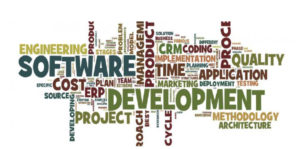
J2ME (Java 2 Platform, Micro Edition) is a technology that allows programmers to use the Java programming language and related tools to develop programs for mobile wireless information devices such as cellular phones and personal digital assistants (PDAs). J2ME consists of programming specifications and a special virtual machine, the K Virtual Machine, that allows a J2ME-encoded program to run in the mobile device.There are two programming specifications: Connected, Limited Device Configuration (CLDC) and the Mobile Information Device Profile (MIDP). CLDC lays out the application program interface (API) and virtual machine features needed to support mobile devices. MIDP adds to the CLDC the user interface, networking, and messaging details needed to interface with mobile devices. MIDP includes the idea of a midlet, a small Java application similar to an applet but one that conforms with CLDC and MIDP and is intended for mobile devices.
Duration : 30 Hrs. Eligibility : Fresher 10th/10+2/Graduate with C/C++/Java Programming Skill
JAVA LANGUAGE
- Java Virtual Machine and bytecode
- Classes, source, and compilers
- Class files, loaders and compilers
- Object orientation
- Classes and instances
- Object Oriented techniques
- Classes and Objects
- Abstract classes
- Interfaces
- Polymorphism
- Dynamic dispatch
- Error handling
- Using inner classes
STANDARD LIBRARIES
- Storing data in Java
- Collections
- Hashtable and HashMap
- Vector and List
- Collections in Java 2
- I/O Programming
- GUI Programming
- AWT
- Swing
- J2ME SPECIFICS
- J2ME components: KVM, CLDC, MIDP
- Personal Java
- Overview of profile system Architecture
- J2ME language differences
- Developing Midlets
- Testing code
- Comparison of different ME platforms
- Differences between J2ME environments
- MIDP 2.0
- Storing data in Java
- Collections
- Hashtable and HashMap
- Vector and List
- Collections in Java 2
- I/O Programming
- GUI Programming
- AWT
- Swing
STANDARD LIBRARIES
- Mobile information device profile
- Creating MIDP applications
- Midlet suites
- Midlet deployment
- MIDP 2.0 GUI
- Graphical User Interfaces with MIDP
- Displays, Commands, Pointers, Screens
- Animations and drawing
THREADING AND SYNCHRONISATION
- Threading
- Creating Threads in Java
- Synchronisation
J2ME CAPABILITIES
- Streamed IO
- Socket IO (TCP/IP)
- J2ME IO
- Networking with HTTP
- Persisting data on portable devices – JSR 75
CONNECTIVITY
- SMS
- Bluetooth
- IrDA – Infrared Data Adapter
- Networking
- Push Registry
- APIS
- MMAPI – JSR 135
- SIPAPI – JSR 180
- Game API
Oracle Database is an RDBMS. An RDBMS that implements objectoriented features such as user-defined types, inheritance, and polymorphism is called an object-relational database management system (ORDBMS). Oracle Database has extended the relational model to an object-relational model, making it possible to store complex business models in a relational database. Relational database management system (RDBMS). Essentially, an RDBMS moves data into a database, stores the data, and retrieves it so that it can be manipulated by applications. Oracle 11gVersion 11g of the Oracle Database, which included built-in testing for changes, the capability of viewing tables back in time, superior compression of all types of data and enhanced disaster recovery functions. The “g” stood for “grid computing,” which supports clusters of servers that are treated as a single unit. See Oracle Database.
Duration : 40 Hrs. Eligibility : Fresher 10th/10+2/Graduate with Java Programming Skill
INTRODUCTION TO ORACLE 11G TECHNOLOGY
DATABASE INSTALLATION AND ADMINISTRATION
- Assessing the Oracle database architecture
- Managing Oracle databases
ACCESSING AND MANIPULATING DATA
- Retrieving data efficiently with SQL Developer
- Applying powerful SQL techniques
- Modifying data with SQL statements
CREATING AND MANAGING DATABASE OBJECTS
- Implementing the physical design
- Constructing and maintaining tables
- Building views, sequences and synonyms
MAINTAINING INTEGRITY, SECURITY AND PERFORMANCE
- Enforcing integrity
- Securing the data
- Improving performance
PROGRAMMING WITH PL/SQL
- Writing basic programs
- Processing data with cursors
IMPLEMENTING SERVER-SIDE LOGIC
- Modularizing code
- Creating packages and triggers

Sent Us a Message

